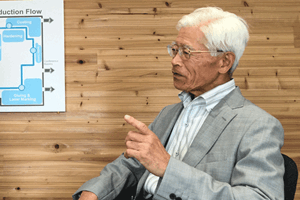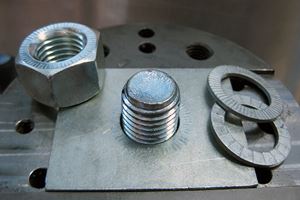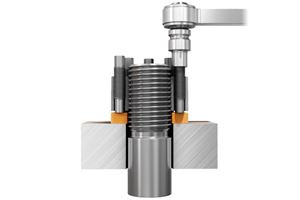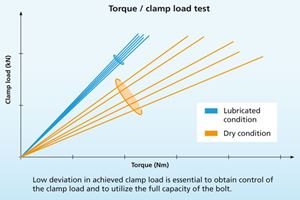The Experts: Why do bolts rotate loose?
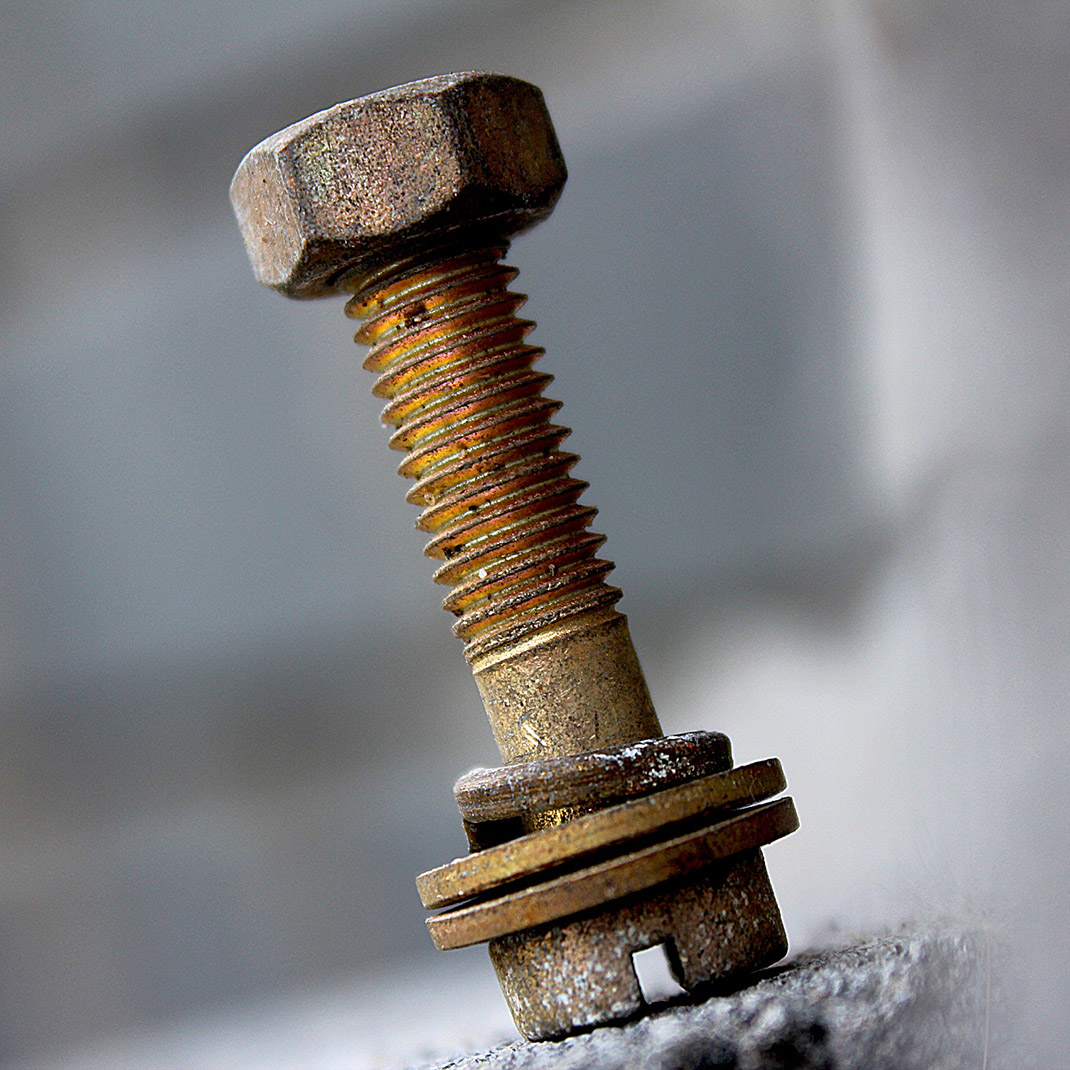
Why do bolts and nuts rotate loose when a bolted joint is subjected to vibration and/or dynamic loads?
Loosening of threaded fasteners due to vibration and/or dynamic loads is an important phenomenon since it is one of the most common causes for failure of bolted joints.
A tightened bolt is elastically elongated but strives to assume its original length, much like a spring. This can only be accomplished by rotation of the bolt/nut in the loosening direction so that the bolt preload is lost. However the bolt/nut is prevented from rotating by friction between the contact surfaces in the threads and under the bolt head/nut.
If a joint is subjected to vibrations and/or dynamic loads that cause relative movement between the contact surfaces the friction is reduced because dynamic friction is lower than static. Therefore the bolt/nut is then no longer captivated by friction and rotates loose. The most common causes of movement between contact surfaces are vibration and external dynamic forces.
ASK THE EXPERTS
Do you have a question about bolt securing?
Put the Nord-Lock experts to the test.
Email your questions about bolt securing to
experts@nord-lock.com
